Yidinjdji, Djabuganjdji, Djirbalngan and Agwamin Country
This is the third section of the five week Queensland trip, covering the Southern Atherton Tablelands and the dry savannah country at Undara Lava Tubes.
Continued from:- Queensland Wildlife 2019 – Part 2 of 4 – Central Queensland (Eungella to Ingham) and the Rare Mahogany Glider.
I had previously visited Cairns and the Atherton Tablelands in 2016 and this blog revisits some of the excellent wildlife locations from the 2016 trip, this trip includes a few new sites missed on the 2016 trip because of time constraints.
It was a beautiful, sunny day when the flight from Rockhampton landed in Cairns and it felt good to be back! I picked up a SUV hire car and made the short trip to Cassowary House near Kuranda, home for the first night.
Kuranda and the Lamb Range
In three previous visits to North Queensland I had always hoped to see a Cassowary but luck had not been on my side. I hadn’t even unpacked the bags from the car at Cassowary House when the owners called me to see a juvenile bird wandering through the grounds!
Cassowary House abuts Kuranda National Park and regularly these magnificent birds wander through the grounds. Later that afternoon, a female in spectacular plumage passed through, every bit as majestic as I had imagined.
Female Cassowary.

That night I drove out to Davies Creek Campground to see if I could find the Northern Bettong. I was tired after the long day of travel so I decided only to walk the access road and spotlight from it.
It was a still, humid, moonless night as I walked the road. The area had recently been backburnt and so it was possible to see quite far into the bush. At first the only mammals I saw were Agile Wallabies, but then I found a foraging Bettong with its distinctive hop. It was instantly recognisable as a Northern Bettong from a low crest of longer black fur along the top of the outer half of the tail.
I approached the Bettong but could only get to within 10m before it would hop off. I tried this a couple of times and before I knew it I couldn’t see the road and was completely lost…shit.
The terrain was a series of undulating hills interspersed with creek lines. I turned off the headlight in the hope that ambient light from distant Cairns would help me get my bearings, but the city was too far away. I chastised myself for leaving my phone and water in the car, because I “only planned to follow the road.”
Despite the rising panic I sat down and realised I had to think my way out of this situation. I remembered the sound of a river where I had parked the car, so I guessed that if I got into one of the dry creek lines and followed it I would end up near the car. It was worth a try. The only trouble was it was very difficult in the dry stony creek bed to work out which way was downstream.
After a couple of false starts, I eventually stuck with a direction and after about 20 worrying minutes I could establish that I was definitely gradually descending. Shortly after the creek passed under the access road. I was very elated and learnt a valuable lesson about being properly prepared before taking off into the bush.
At Davies Creek Campground there had been lots of campers and it became clear to me that they were trapping from the long lines of pink ribbon leading off from the road into the bush.
Most of the traps were open but one was shut and when I examined it I found it contained a Northern Brown Bandicoot. I saw a second Northern Bettong as I returned to the car.
The drive back along Davies Creek Road was eventful with all of Agile and Whiptail Wallabies and a Northern Brown Bandicoot seen.
Back at Cassowary House I heard a rustling in the trees as I walked through the grounds and when I shone the headlight up into the canopy I found a black and white face looking back at me. It was a beautiful Striped Possum, one of many that I heard/saw in the grounds that night.
Striped Possum.

The grounds of Cassowary House were alive with animals at this late hour and I also saw a Giant White-tailed Rat, Red-legged Pademelon, Bush Rat, Dingo and a Northern Brown Bandicoot.
Northern Brown Bandicoot.
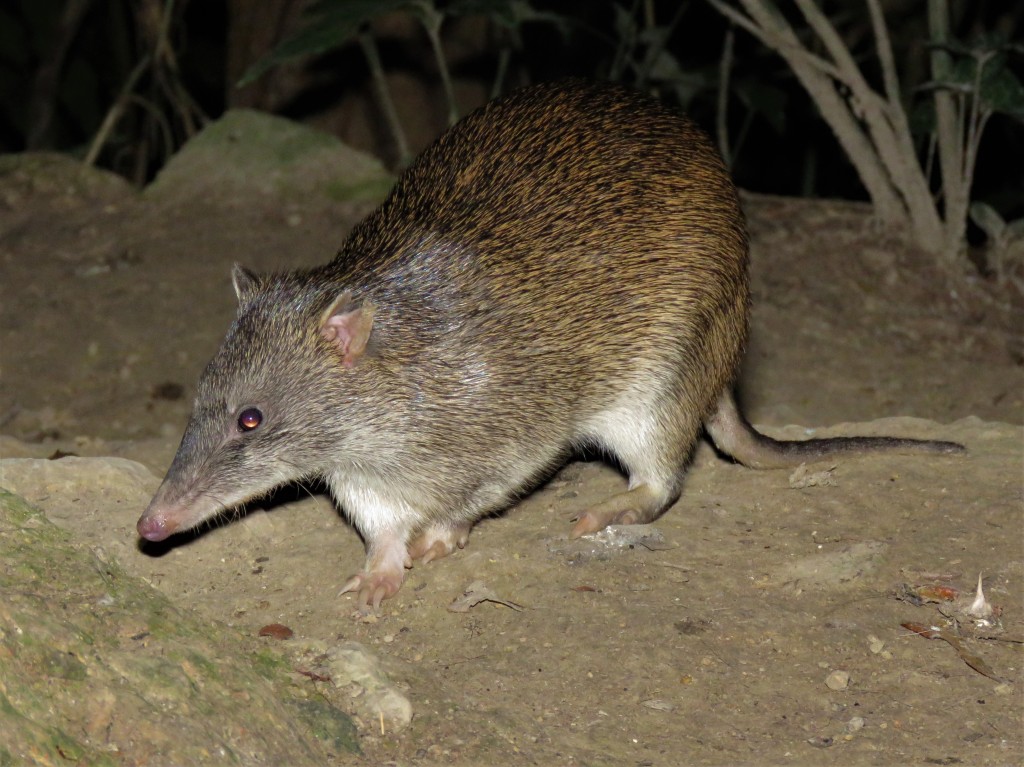
You know you are in Tropical North Queensland when the breakfast fruit platter includes persimmon, guava, papaya, soursop, pineapple, passion fruit and lychees. What a way to start the day!
I wasn’t dining alone on the balcony I was joined a by a number of Brush Turkeys and a beautiful female Magnificent Riflebird.
Female Magnificent Riflebird.

There was also action on the forest floor below the balcony when a North Queensland endemic the Musky Rat Kangaroo passed through. This ancient member of the macropod family is one of only two diurnal Australian marsupials (the other being the Numbat.)
Musky Rat Kangaroo.

I had planned five leisurely days to view the wildlife of Southern Atherton Tablelands but wet weather was forecast for three of these five days and meant that I needed to fit as much as I could into two days before this inclement weather set in.
Mareeba Gorge
I spent a pleasant couple of hours at Mareeba Gorge viewing the Mareeba Rock Wallabies, and while there was no doubt that these animals are uncomfortably habituated to people, it is a nice change not to have wildlife running away from you for once!
Mareeba Rock Wallaby.
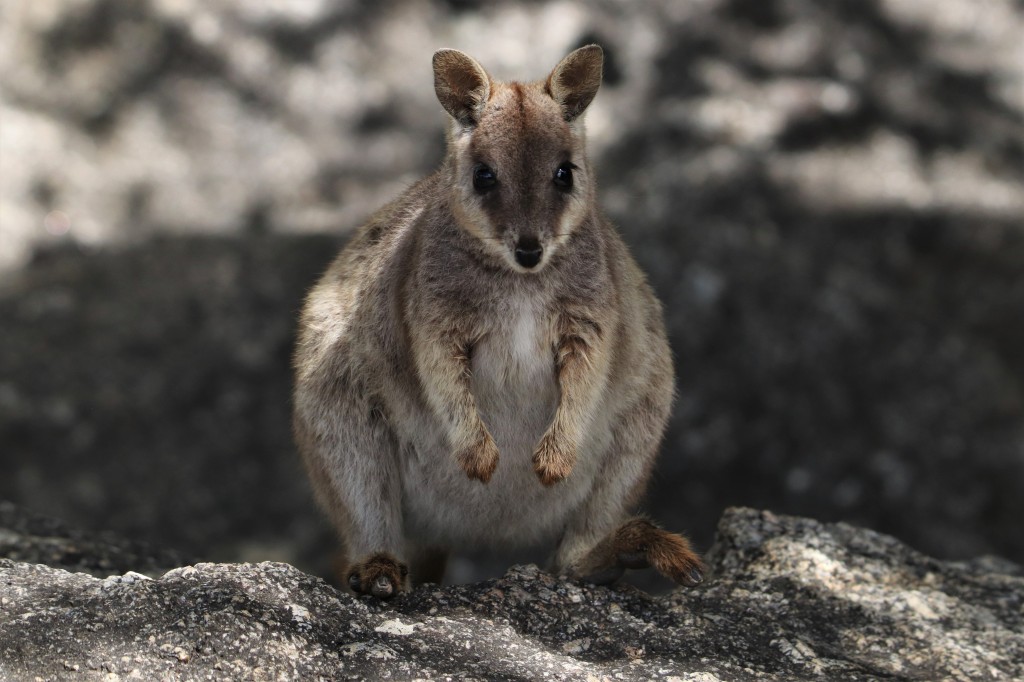
Nerada Tea Plantation
Another well known stop on the Atherton Tablelands wildlife circuit is the Nerada Tea Plantation and it’s resident Lumholtz Tree Kangaroos. If visiting later in the day they are quite easy to find, just look for a group of camera wielding tourists looking up into the thin strip of rainforest canopy! A mother and juvenile were low down in the trees when I arrived.
Juvenile Lumholtz Tree Kangaroo.
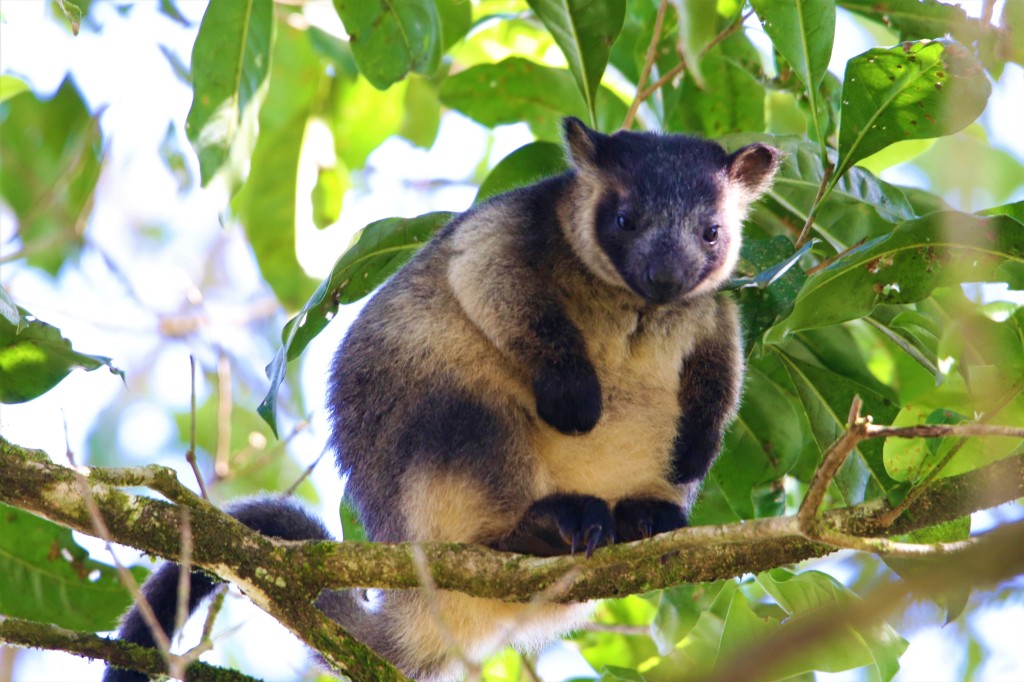
Sometimes the experience can feel a little like a circus so I wandered off from the main group to see what else was around, and discovered a pair of Bush Stone Curlews trying to look inconspicuous on the grass.
Bush Stone-curlews.

At the far end of the rainforest strip my searching was rewarded with a male Lumholtz Tree Kangaroo also feeding low in the canopy. I couldn’t help but notice Lumholtz Tree Kangaroos are not very graceful moving through the trees!
Lumholtz Tree Kangaroo.

My next five nights were at the excellent Chambers Wildlife Lodge, chosen of course for the easy wildlife viewing on the grounds, but that would have to wait because I was meeting Tablelands wildlife expert and thoroughly nice bloke Alan Gillanders http://www.alanswildlifetours.com.au/ for a night viewing rainforest possums and gliders.
Ravenshoe
One of my main targets for the trip were the gliders, absent from the South West of Australia where I live. I had been lucky and had seen four species so far on the trip but at the first site with Alan this was increased to six species. At a feeding tree we saw four Yellow-bellied Gliders and with a bit of patience tiny Feathertail Gliders.
Yellow-bellied Glider.

Atherton Highlands
At a second site, we searched for rainforest possums finding all of Coppery Brushtails, Green Ringtails, Lemuroid Possums and a Lumholtz Tree Kangaroo.
Lemuroid Possum.

The wildlife viewing so far had been excellent but there was one notable absentee, the Herbert River Ringtail. Alan was on the case though and at our third and final site we had excellent views of this species.
Herbert River Ringtail.
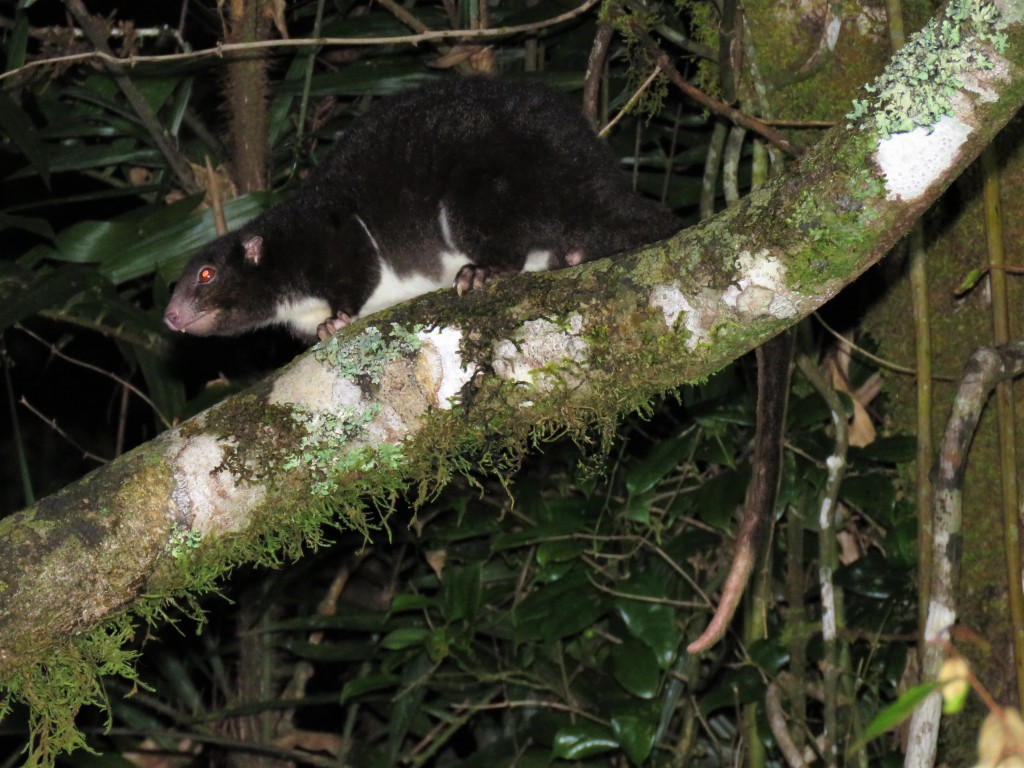
On the drive back to Yungaburra two Northern Brown Bandicoots and two kamikaze Red-legged Pademelons were added to the nights tally. It had been an excellent night and I highly recommend spending time with Alan if visiting the Atherton Tablelands.
Curtin Fig National Park
Seeing as the night was going so well, after I had said goodbye to Alan I visited nearby Curtain Fig National Park where I saw ten Coppery Brushtail Possums.
Coppery Brushtail Possum.

Also seen at Curtain Fig National Park that night were a Long-nosed Bandicoot, Red-legged Pademelons and 5 Giant White-tailed Rats. On subsequent visits over two nights I saw a further 10 Giant White tailed Rats, sometimes very well as they have a habit of propping in vine thickets. It seems that Curtain Fig National Park is a hotspot for these impressive rodents.
Giant White-tailed Rat.

Although I saw no Green Ringtail Possums on the first night, Curtain Fig is good for this species and I saw numerous animals on both of the other nights I visited.
Green Ringtail Possum.
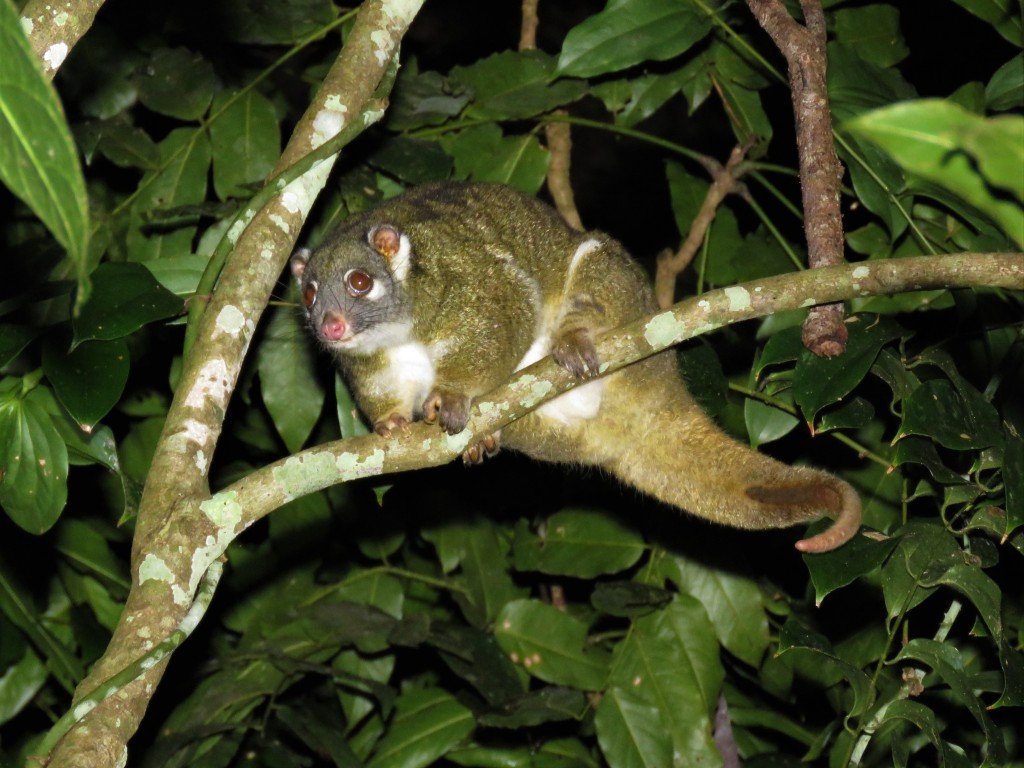
Yungaburra
On the final day before the rain set in I spent a pleasant afternoon at Petersen Creek in Yungaburra. It’s a big call but I’m gonna say the best place in Australia to see the Platypus. The local community have done a really excellent job of revegetating the creek and it attracts all sorts of wildlife. There were lots of colourful Rainbow Bee-eaters making the most of the abundant insect life during the walk.
Rainbow Bee-eater.
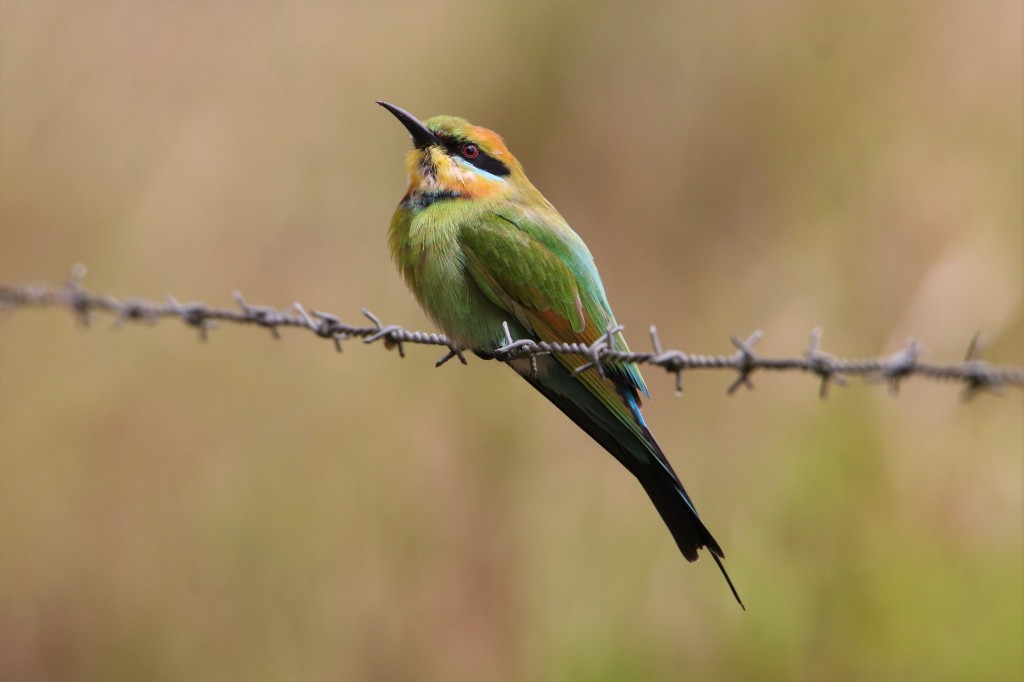
The star of the show is of course the Platypus and they can be seen throughout the day, often up to three animals feeding in the creek at any one time. The water is murky but the Platypus are easy to see when they surface between dives, often only metres away.
Platypus.

Mt Hypipamee
On my second night in the Southern Tablelands, and the last night before the wet weather set in, I visited Mt Hypipamee. As I drove uphill to Mt Hypipamee I soon entered the cloud and mist, but fortunately conditions were not so bad as to call off the spotlight. On the access road driving in I saw both a Red-legged Pademelon and Long-nosed Bandicoot.
I spotlighted along the entrance road and it was a slow start to the evening, but as I gradually got my eye-in I found 5 Lemuroid Possums, a Green Ringtail Possum and an impressive Northern Barred Frog.
Northern Barred Frog.
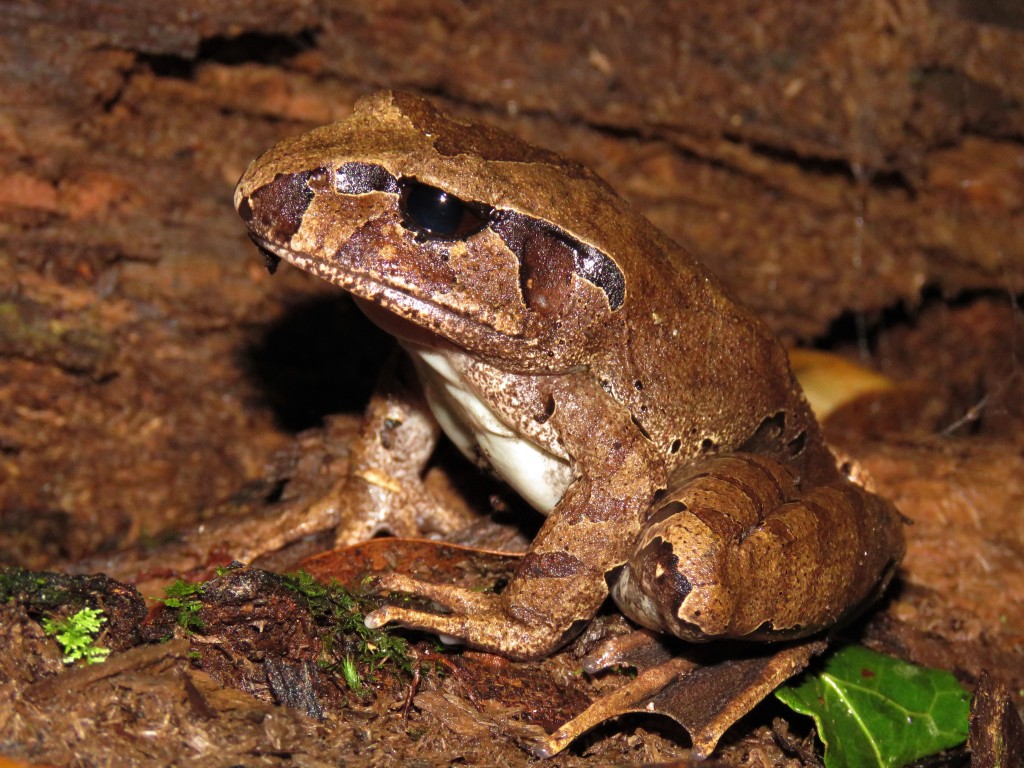
The final possum of the evening was a Herbert River Ringtail wolfing down leaves in a tree near the carparking area. I was really tickled because this possum, perched on the branch enjoying dinner, looked for all the world like a giant contented budda.
Herbert River Ringtail Possum.

Chambers Wildlife Lodge
The wildlife at Chambers was as great as I had remembered it. The evening starts once honey has been daubed on trees in front of a viewing platform on site. The first visitors to the honey are abundant Sugar Gliders that continue to visit on and off all night.
Sugar Glider.
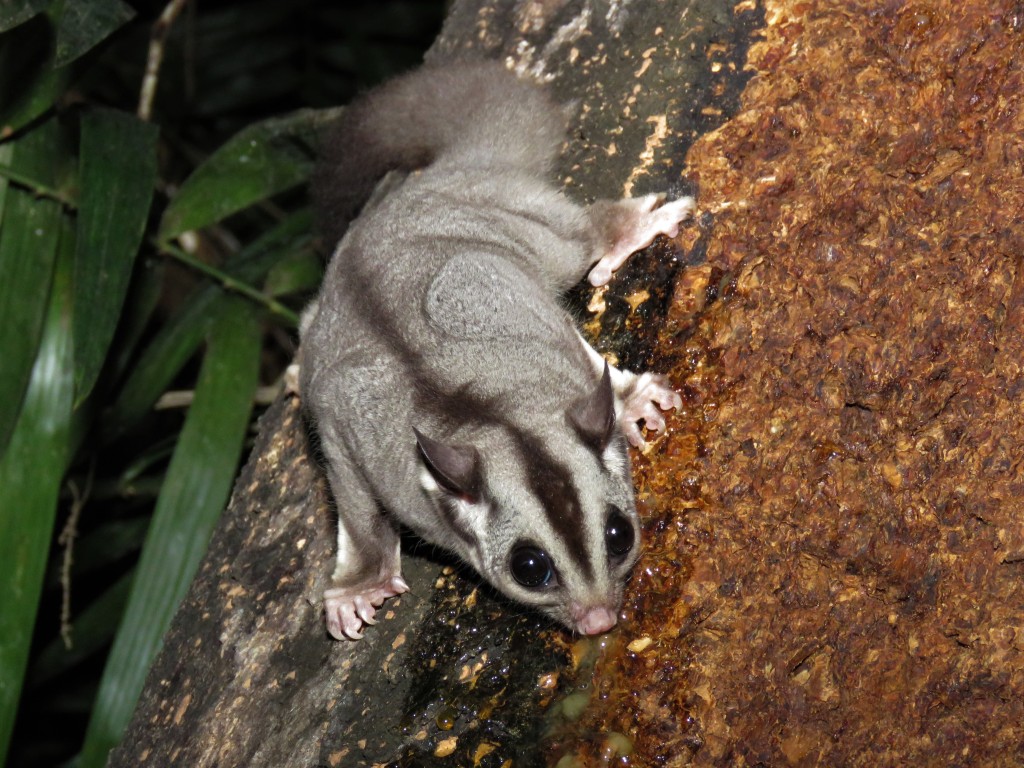
As gravity takes effect the honey runs down the tree trunk and becomes available to ground dwelling animals that appear to take advantage of the feast. Long-nosed Bandicoots were present every night but Bush Rats were also present some nights.
Long-nosed Bandicoot.
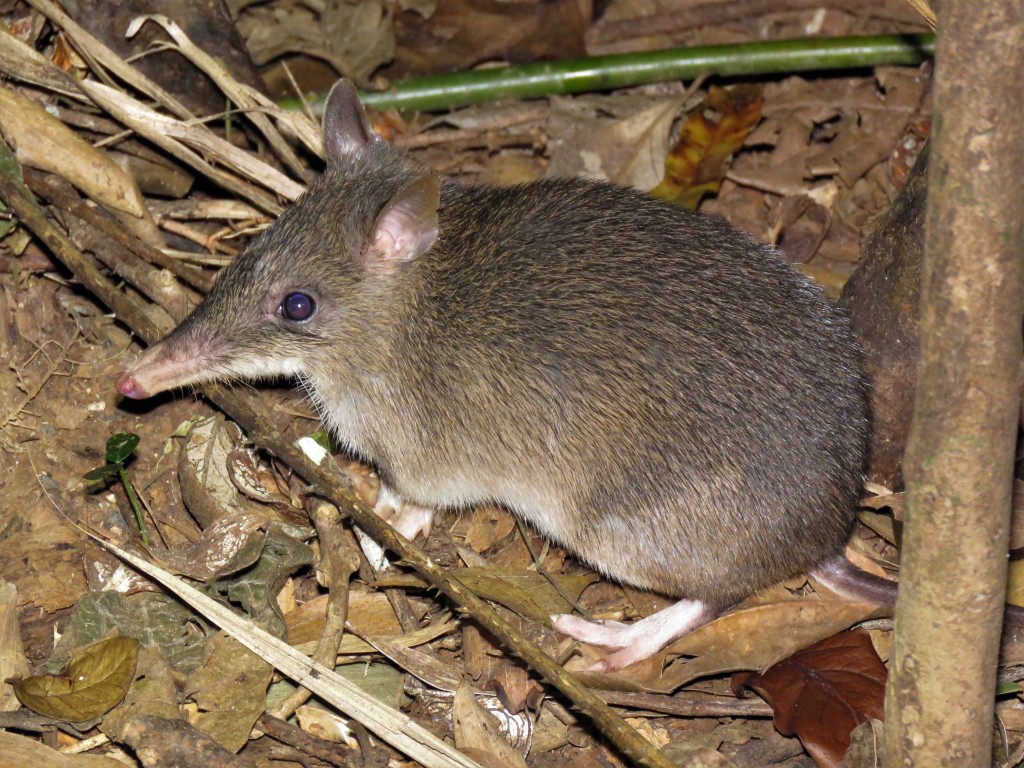
Striped Possums were around in good numbers at Chambers, but these usually appear much later on in the evening, often approaching midnight. This often worked in my favour when returning from spotlighting other parts of the Tablelands.
Other mammals seen at Chambers over the five days were Red-legged Pademelons at night and Musky Rat Kangaroos during the day. The stand-out bird at Chambers was the Spotted Catbird that staked out the balconies in the morning to steal fruit off the Magnificent Riflebirds and Lewin’s Honeyeaters, and yes they do sound like a cat, a cat with its gonads caught in a vice!
Spotted Catbird.

Chambers is situated in Crater Lakes National Park and the beautiful ex-volcanic lakes of Eacham and Barrine have great walking trails circumventing them. The 5km walk around Lake Barrine is excellent for Musky Rat Kangaroo.
I visited Tinaroo Dam on my last night in the Southern Tablelands to try my luck with the Northern Bettong. I didn’t find this species, but did see a Northern Brown Bandicoot and Agile Wallabies. A Grass Owl terribly injured from road strike put a dampener on an already damp night and made me very sad as I moved it off the road to die in peace.
Undara Lava Tubes
Undara Lava tubes.
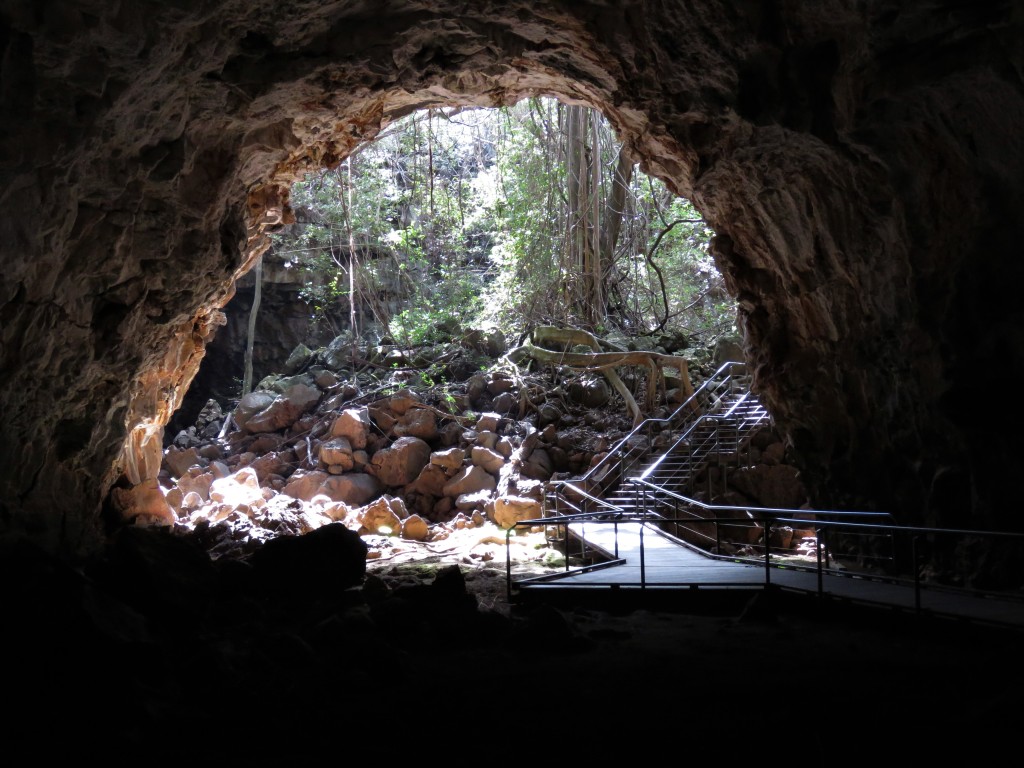
I was glad to head West to the spectacular Undara Lava Tubes after 3 days of non-stop rain. The route via Ravenshoe and Mount Garnet took me into dry gulf savannah country.
Map showing the location of Undara Lave Tubes.
The Undara Lava Tubes were formed 190,000 years ago when lava from an erupting volcano followed a river bed and solidified. The resulting structures are indeed impressive, some over 21m wide and 10m high,and the longest an astounding 160kms.
On arrival I didn’t have long to set up the tent before my guided tour of the lava tubes. On the short drive to the tour cave we passed both Common and Antilopine Wallaroos. There was both a male and female Antilopine Wallaroo showing the very distinct colour variation in the sexes.
Female Antilopine Wallaroo.

Male Antilopine Wallaroo
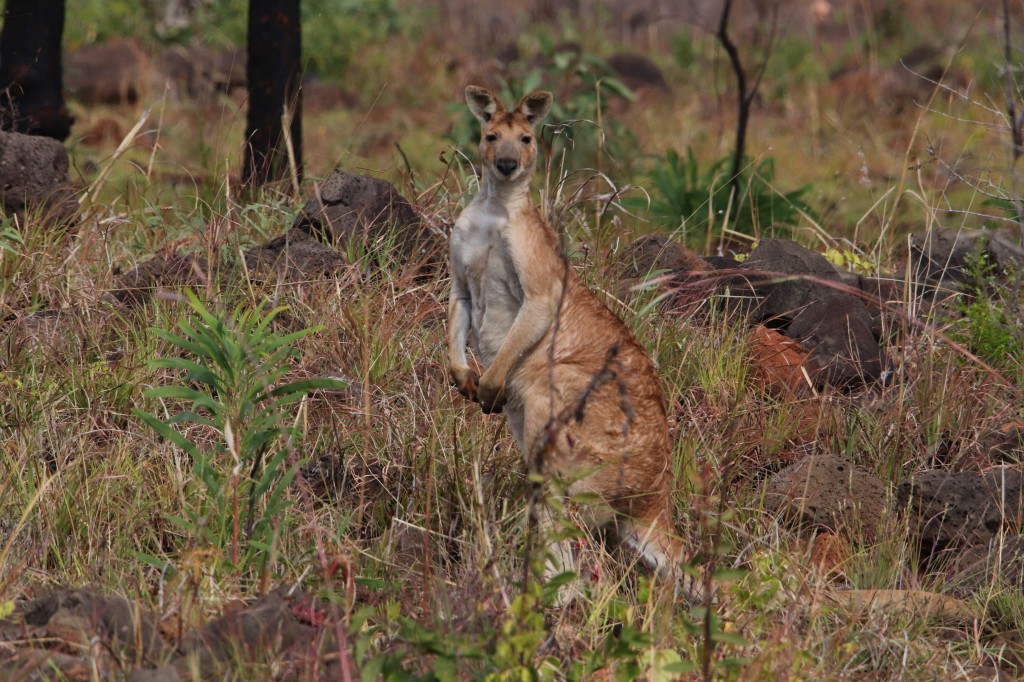
Four species of bats roost in the lava tubes at Undara but the only species we saw on the tour was the Eastern Horseshoe Bat.
The road to the lava tubes is closed to the general public which was very disappointing, because it passes through wallaroo rich habitat. I was lucky to have seen these species in the middle of the day on the tour.
That afternoon I drove out to the Kalkani Crater instead and found both Whiptail Wallabies and Eastern Grey Kangaroos common on the drive. The walk around Kalkani Crater has great views over the surrounding plains dotted with extinct volcanoes. During the walk Whiptail Wallabies and a single Swamp Wallaby were seen.
View from Kulkani Crater.

After dark I had a spotlight, and saw Eastern Grey Kangaroos, Swamp Wallabies and a Brushtail Possum around the camping area. The find of the night however was a beautiful Northern Spotted Velvet Gecko on a granite outcrop.
Northern Spotted Velvet Gecko.

Later on in the evening when the campground had quietened down I found a Rufous Bettong that as usual allowed close approach.
Rufous Bettong.

The following morning I had an eventful drive out of the park with two Bustard, lots of Eastern Grey Kangaroos and Whiptail Wallabies and a dirty big Feral Pig.
My next destination was Kingfisher Park in the Northern Tablelands where a tropical Orchard attracts all sorts of wildlife. This and other wildlife seen on Mount Lewis and the Cape York Peninsula is covered in the final part of this four blog series of the Queensland Trip.
#QuollingAround
5 thoughts on “Queensland Wildlife 2019 – Part 3 of 4 – The Southern Atherton Tablelands and Undara Lava Tubes.”